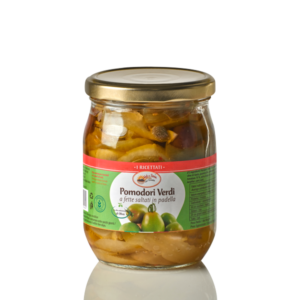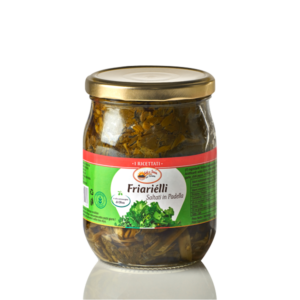Additional information
| Product Logo |  |
|---|---|
| Logo | C.G.M. (Collective Geographic Mark) |
| Read more | http://www.cipollaramatadimontoro.it |
| Source area | Montoro (AV) - Italy |
| Nutritional Intake | Vegetable with good quantity of magnesium, iron, phosphorus, manganese and calcium. Also rich in simple sugar like glucose, fructose, and insoluble fiber (fructans). Good percentage of flavanoids like quercitin, and sulfur compounds like ethanethiol, dimethylsulphide, setil-thioacetate and propanediol-oxid, responsible for the typical lacrimation effect. The fresh vegetable is rich in vitamin A, B1, B2, C and E. |
| Period of transformation | From the second week of October to the fourth week of November |
| Trivia | Montoro Onion (Cipolla Ramata di Montoro) C.G.M. is so called because of the bright coppery reflections of its outer skin. The beneficial properties were well-known to Romans: gladiators used to scrub their bodies with this vegetable to tone their muscles, convinced that it could help thin their blood and enhance athletic performance. |
| Source area | Germania |
|---|---|
| Nutritional Intake | Stevia Rebaudiana is a herbaceous plant known for centuries for its sweetening power, thanks to the presence of dipertenic glycosids like stevioside (3-10% dry weight, which gives the typical licorice taste), and rebaudioside A (1-3% dry weight)concentrated in the dried leaflets 200 times sweeter than common table sugar (stevioside, in particular, is 200 times sweeter and rebaudioside is 250 sweeter than common table sugar). On the market, steviol glycosides are usually mixed with a natural polyalcohol (erithritol), with sweetener function and neutral flavor. Stevia is a powerful anticariogenic, with very low calories and perfect for diabetics; it can resist high temperatures without degrading and assume hypoglycaemic and hypotensive features when consumed in considerable quantities. Unlike table sugar, stevia is not a refined sugar: it is obtained by the crystallization of hydroalcoholic extracts released by leaflets during the water processing. Calories indicates on the label actually derive from sugar added for shelflife necessity. A product that contains Stevia as added sweetener should expire in less than six months. |
| Period of transformation | The period of use fits the availability period of fresh fruit used for the final product. |
| Trivia | The first information concerning this plant dates back about to 1850: it was used as sweetener by indigenous people of Amazon area of South America. The name “Rebaudiana” derives from the Paraguayan chemist Rebaudi, who extracted the first sweetening agent from the plant. Stevia has been used as sweetener in Japan since the 1970’s. |





 Montoro Onion (Cipolla Ramata di Montoro) 60%
Montoro Onion (Cipolla Ramata di Montoro) 60% Glucos Syrup, Fructose
Glucos Syrup, Fructose Sea salt
Sea salt White vinegar
White vinegar Erythritol
Erythritol Steviol Glycosides
Steviol Glycosides Acidifier: citric acid
Acidifier: citric acid Pectin
Pectin







